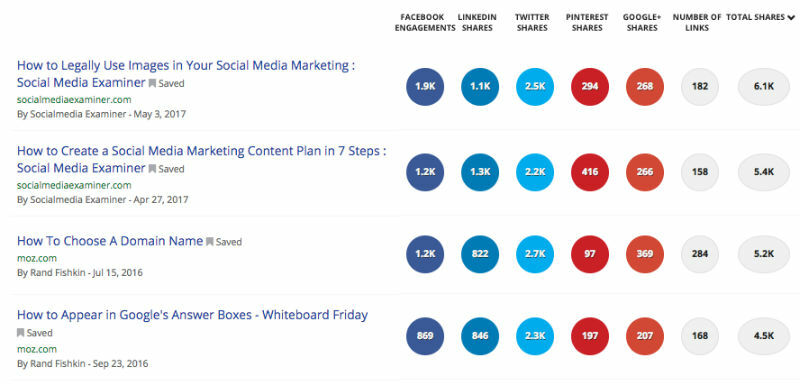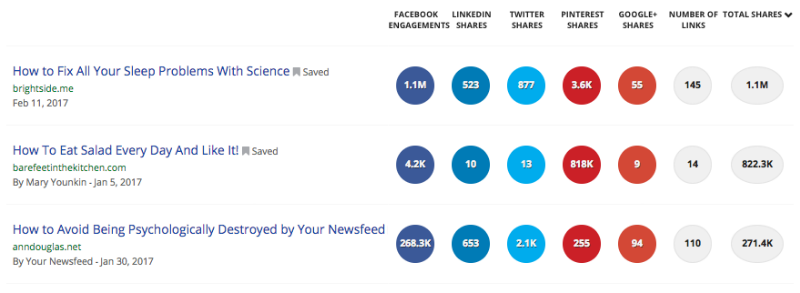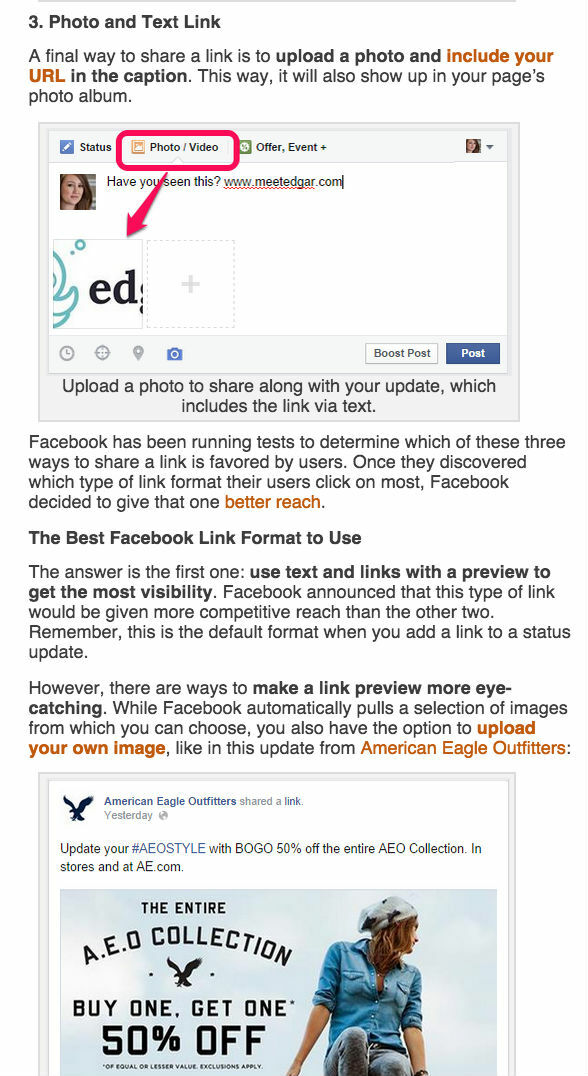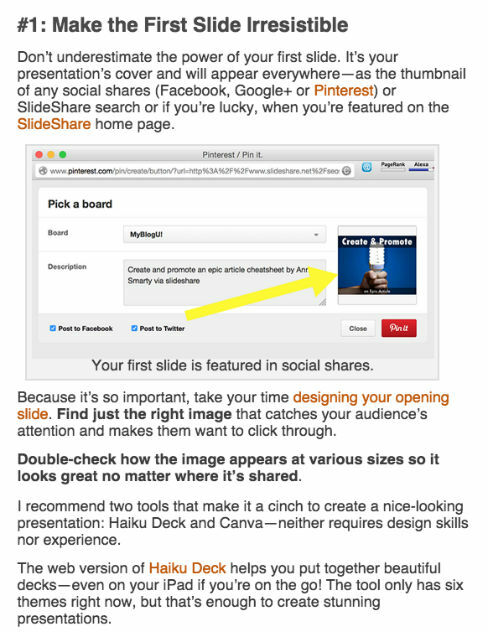In the last three years at BuzzSumo we have crawled and analyzed over 2m ‘how to’ posts. The top posts were shared over a million times. These posts ranged from ‘how to hide your house from Google maps’ and ‘how to fix your sleep problems with science’ to ‘how to be a great lover’. Popular business content included ‘how to look good in Skype interviews’.
Find the best How-To posts for your topics
The best ‘how to’ posts frequently outperformed other content formats in terms of views, shares, links and conversions. So we decided to take a look in more detail. In this post we set out three steps to create the perfect ‘how to’ post namely:
- researching the right questions and topics
- identifying where you can be the best answer
- using a winning structure for your post
Why “How To” Posts?
Our research reveals that ‘how to’ posts are an opportunity to establish lasting trust and authority with your audience. The best “how to” posts address the questions the audience is asking and provide value by helping readers to perform a specific task rather than simply imparting information.
The top 10,000 ‘how to’ posts in our survey averaged over 90,000 shares each, with a median of 49,000 shares. What is more significant is that they often outperformed other content formats. As far back as 2012 Hubspot found that how-to style posts generated an average of 55% more views than all other types of posts on their blog.
This reinforces our findings that business or job focused ‘how to’ posts frequently outperform other content formats. Below are examples of strongly performing ‘how to’ posts from Social Media Examiner and Moz.
Look at the number of links from unique domains that these ‘how to’ posts are gaining. Over 100 unique domain links for a post is very high, even for these popular sites.
‘How to’ posts also work in the consumer arena. Here are three examples from the current year.
Tip: See the top ‘how to’ posts for a topic or site using BuzzSumo. Just type Topic ‘how to” or Domain ‘how to’. Here is an example of a search for ‘how to’ posts on analytics.
Challenges and opportunities
‘How to’ posts are not easy posts to create, they involve a lot of research and thought. You need to:
- really understand the questions your audience is asking and the issues they need help with. The choice of topic is critical to a ‘how to’ post, is it something your audience wants help with.
- provide the best, most authoritative answer. There is little point being just another ‘how to’ post on a topic well served with ‘how to’ posts. Our research shows that the best posts or answers dominate, so you don’t want to be an also ran.
- be focused on providing practical and valuable advice that helps the reader. The best ‘how to’ posts are educational and often take you through a process step by step.
The great news is that if you can be the best answer to a question you will have a piece of evergreen content that gives you compound returns over time. You will also establish yourself as an expert or authority, and build trust with your audience. ‘How to’ posts go to the heart of the
“If you sell something, you make a customer today, but if you genuinely help someone, you create a customer for life.” Jay Baer
The size of the opportunity is highlighted in study carried out by Towards Maturity of 5,700 workplace employees. The survey found that 75% of employees were motivated to seek information online about how to do their jobs better and faster.
The Benefits of a ‘How To’ Post
A good ‘how to’ post has many benefits, for example it:
- educates your audience rather than simply pushes your product
- demonstrates your expertise through the quality of your post
- builds an audience by building a reputation for insight and helpfulness
- creates relevant content that addresses an audience’s needs
- is a content format that attracts links as well as shares
How to create the perfect ‘how to’ post
From our survey we identified 3 steps to create the perfect ‘how to’ post:
- research the questions your customers are asking
- identify the questions where you can provide the best answer
- use a winning structure for your ‘how to’ post
1. Research The Questions Your Customers Are Asking
The perfect ‘how to’ post is the answer to a question: “How do I …?”
There’s no point creating a perfect answer to a question nobody’s asking, so you must research your audience and the content which will be helpful to them. Here are some suggested approaches.
Talk to your customers
Start by asking customers where they need help. They’re probably already asking you questions via social media, help desks, or through your sales and support teams. Get all these questions into one place and look for patterns. identify the key questions that customers are asking and the issues that are keeping them awake at night.
Tips: Ask customers to take part in surveys on their key challenges. Brainstorm recent customer questions with your sales team. Look at common questions your help desk is dealing with.
Search Bloomberry and Answer The Public
None of us know everything though, right? So you can enhance your own knowledge and experience by searching the questions that people are asking on forums and sites such as Quora.
Type in any topic into Bloomberry and the app will return the questions being asked about your topic across thousands of forums. You can use the filters to see recent questions or only questions asked on specific forums.
Similarly you can use Answer The Public to see Google suggestions about questions for any topic.
Research The Content Your Audience Is Sharing
Last year the New York Times participated in a study that looked at why people share content. They found five main motivations but number one was to bring valuable and entertaining content to their colleagues and friends. Thus it is clear people share content if they find it valuable. Therefore to understand what type of content is helpful to users you can take a look at the content they are sharing. This can help you identify current and emerging issues.
Here is an example BuzzSumo search for the most shared “how to” posts on Ads and PPC. At the time of writing this post the most shared articles in the last month were about advanced Facebook targeting, mobile and new Adwords features.
You could create ‘how to’ posts and answer the implied questions behind any of these, e.g.
- How can I use Facebook targeting?
- How do I place ads in mobile Google searches?
- How do I use the new Adwords reports?
Tip: Use the date ranges in BuzzSumo to see the most shared content last week and last month. You will often see trends and it is good to highlight more recent questions.
You can also use BuzzSumo’s trending dashboard to to track emerging issues. If you can be first to share an answer, you can gain credibility and authority.
Research Summary
To draw up a list of potential topics for ‘how to’ posts your research can include:
- talking to customers
- drawing on your experience, including your sales and account managers
- researching questions they are asking online
- reviewing the content customers are sharing
- identifying issues that are starting to trend
2. Identify the Questions where you can be the Best Answer
Following your research you will have a shortlist of questions that your audience is asking. The next step is to decide upon the question you are going to address. Specifically consider:
- the question that would most help your customer if it was answered
- narrowly defined ‘long tail’ questions eg ‘How can I improve CTR using Google AdWords on a limited budget’
- whether the question has been adequately answered already
- whether you have insights or information that can be developed into the authoritative answer
This last question is critical. You need to identify how your post will be the best answer not simply another “how to” post on the topic. Lee Odden summarized this challenge nice and simply.
“Be the best answer.” Lee Odden, Top Rank Marketing
Brainstorm the ways can you add extra value, for example:
- update previous advice if things have changed
- conduct and provide new research
- gather top tips from experts
- create a series of images for key steps or information
- provide a well designed content structure that helps people learn
Tip: Be clear how your answer will add extra value to existing posts, will it be more informed, more current, better structured, include your unique insights, personality and tone?
3. Use A Winning Structure for your “How To” Post
Our analysis of ‘how to’ posts on BuzzSumo reveals that:
- the most shared posts are long form content with more than 3,000 words
- the top posts typically follow a clear structure with numbered steps
- picture list posts are particularly popular in taking people through tools and processes
- videos within “how to” posts work particularly well from tying a bow tie to changing radiator valves
The top performing posts draw on and utilise lessons from educational learning designers.
Learning designers have spent many years researching and testing the best ways to help people learn. As part of this research they have developed well tested instructional models. These models provide a clearly defined structure that scaffolds or supports the learning, for example:
- introduces the topic and gains attention
- provides information in structured, bite sized elements
- exemplifies the information, often with worked examples or case studies
- provides practice opportunities to apply the new knowledge
- provides actionable tips
- provides links to further resources
You can also look to more formal instructional models such as Gagne’s 9 steps of instruction.
A Winning Structure
Based on our analysis a winning “how to” post structure will have the following elements:
- numbered steps
- scannable text
- annotated images and videos
- a case study
- links to tools
- practical tips
- links to further resources
Let’s have a look at some examples which utilize these elements.
Best Practice Examples
Laura Roeder
This post on How to Improve Your Facebook News Feed Visibility by Laura Roeder has been shared over 9,000 times. It has a strong “how to” post structure including:
- numbered steps
- annotated images
- links to further resources
- a case study
- scannable text
Below is an extract from Laura’s post.
Ann Smarty
This post by Ann Smarty on How To Optimize Your Slideshare For Maximum Exposure is another great example of how to structure a “how to” post.
The post also starts with a clear promise
“In this article I’ll share five tips to get the most out of your SlideShare deck.”
So I’m in no doubt about what I’ll get, and whether it’s right for me.
The post is long form and detailed but broken up with the use of steps, images and tips. This post also provides links to tools as shown below.
Kristi Hines
This post by Kristi Hines on How to Use Google Analytics Behavior Reports to Optimize Your Content received over 8,000 shares.
It follows a similar format with numbered steps, skimmable text and images. This post also contains regular actionable tips.
Tip: Research the most shared ‘how to’ posts in your area and see what lessons you can learn from the post structure including the use of images and videos.
Summary
In every industry there is an opportunity to create ‘how to’ posts that deliver value to your audience. Start building trust and authority by:
- researching the questions that need answers
- identifying where you can add additional value and be the best answer
- using a winning ‘how to’ structure for your post
In short: be helpful.
Categories
Content MarketingCategories
Content MarketingThe Monthly Buzz⚡
Subscribe to BuzzSumo's monthly newsletter to:
Stay up-to-date with the best of the best in content marketing 📝
Get data-informed content, tips and tidbits insights first 👩🏻💻
Read top shared content by top marketing geeks 🤓
Try
Enter any topic, term or url to search to see BuzzSumo in action. It’s free!
100% free. No credit card required.





